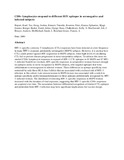| dc.contributor.author | Rupert, Kaul | |
| dc.contributor.author | Tao, Dong | |
| dc.contributor.author | Joshua, Kimani | |
| dc.contributor.author | Timothy, Rostron | |
| dc.contributor.author | Peter, Kiama | |
| dc.contributor.author | Ephantus, Njagi | |
| dc.contributor.author | Erastus, Irungu | |
| dc.contributor.author | Bashir, Farah | |
| dc.contributor.author | Julius, Oyugi | |
| dc.contributor.author | Rana, Chakraborty | |
| dc.contributor.author | Kelly, S | |
| dc.contributor.author | MacDonald | |
| dc.contributor.author | Job, J. Bwayo | |
| dc.contributor.author | Andrew, McMichael | |
| dc.contributor.author | Sarah, L. Rowland-Jones | |
| dc.contributor.author | Francis, A | |
| dc.date.accessioned | 2013-07-08T08:18:25Z | |
| dc.date.available | 2013-07-08T08:18:25Z | |
| dc.date.issued | 2001 | |
| dc.identifier.citation | Rupert Kaul, Tao Dong, Francis A. Plummer, Joshua Kimani,Timothy Rostron, Peter Kiama,Ephantus Njagi, Erastus Irungu, Bashir Farah, Julius Oyugi, Rana Chakraborty, Kelly S. MacDonald,Job J. Bwayo, Andrew McMichael, and Sarah L. Rowland-Jones; CD8+ lymphocytes respond to different HIV epitopes in seronegative and infected subjects; J Clin Invest. 2001 May 15; 107(10): 1303–1310 | en |
| dc.identifier.uri | http://www.ncbi.nlm.nih.gov/pubmed/11375420 | |
| dc.identifier.uri | http://erepository.uonbi.ac.ke:8080/xmlui/handle/123456789/46399 | |
| dc.identifier.uri | http://www.ncbi.nlm.nih.gov/pmc/articles/PMC209302/ | |
| dc.description.abstract | HIV-1–specific cytotoxic T-lymphocyte (CTL) responses have been detected at a low frequency in many HIV-1–exposed, persistently seronegative (HEPS) subjects. However, it is unclear how CTLs could protect against HIV acquisition in HEPS subjects, when high levels of circulating CTL fail to prevent disease progression in most seropositive subjects. To address this issue we studied CD8+ lymphocyte responses to a panel of HIV-1 CTL epitopes in 91 HEPS and 87 HIV-1–infected Nairobi sex workers. HIV-specific responses in seropositive women focused strongly on epitopes rarely or never recognized in HEPS subjects, who targeted epitopes that were subdominant or unrecognized in infected women. These differences in epitope specificity were restricted by only those HLA class I alleles that are associated with a reduced risk of HIV-1 infection in this cohort. Late seroconversion in HEPS donors was associated with a switch in epitope specificity and/or immunodominance to those epitopes preferentially recognized by HIV-1–infected women. The likelihood of detecting HIV-1–specific responses in HEPS women increased with the duration of viral exposure, suggesting that HIV-1–specific CD8+ responses are acquired over time. The association between differential recognition of distinct CTL epitopes and protection from HIV-1 infection may have significant implications for vaccine design. | en |
| dc.language.iso | en | en |
| dc.publisher | University of Nairobi, | en |
| dc.title | CD8+ lymphocytes respond to different HIV epitopes in seronegative and infected subjects | en |
| dc.type | Article | en |
| local.publisher | College of Health Sciences, | en |

